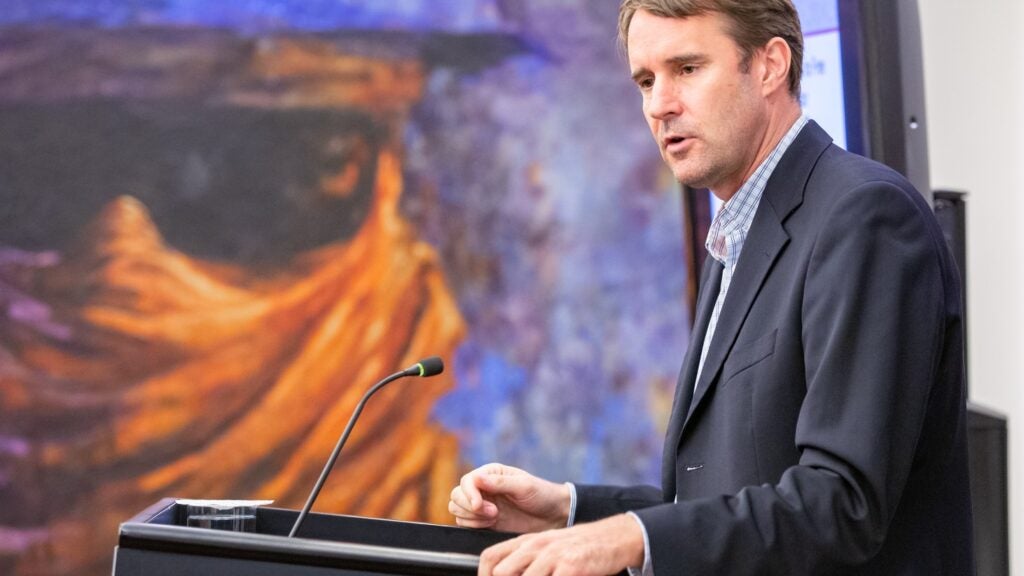Why the Education City Stadium is Built to Last

Professor Danyel Reiche, Visiting Associate Professor at Georgetown University in Qatar, on why the World Cup venue in the heart of Qatar Foundation’s environment in knowledge can set a new standard for legacy and longevity.
The Education City Stadium, which was officially opened in June and will host matches at the FIFA World Cup Qatar 2022™, is setting an exemplary standard for a legacy management program after a mega-sporting event.
Previously, there had been a regrettable path dependency of the misuse of public resources at World Cups and Olympic Games: As in South Africa in 2010 and Brazil in 2014, the FIFA World Cup™ 2018 left ‘white elephants’ in the host country, Russia. White elephants are infrastructure – in this case stadiums – built for a mega-sporting event that have no long-term use and cause large maintenance costs that remain financial burdens for decades to come.
Famous examples are the Montreal Olympic Stadium that hosted the 1976 Olympic Games and the Cape Town Stadium that was built for the 2010 FIFA World Cup™. Both stadiums lack local clubs to consistently fill them, and have brought significant maintenance costs to their municipalities. In the Middle East, an example of a white elephant is the Olympic Stadium in the Northern Lebanese city of Tripoli that was built for the 2000 AFC Asian Cup, although the local football club Tripoli SC keeps playing elsewhere, at Tripoli Municipal Stadium.
A major reason for why white elephants happen is that the main criteria for new stadiums for major sporting events is a location that promises spectacular images on television, as it did in Cape Town (with the view of Table Mountain) and Tripoli (with its view of the Mediterranean), prioritizing a boost to tourism instead of the long-term use of the facility beyond the few weeks of a mega-sporting event.
According to an article in the German daily Süddeutsche Zeitung, 10 of the 12 2018 FIFA World Cup™ stadiums in Russia have capacities beyond 40,000. The average attendance in the top division of the Russian football league is only 14,000, far below the capacity of the renovated and expanded World Cup stadiums. Five of the 12 World Cup stadiums were even built in cities without a first league football team.
The designers of the Education City Stadium have learned from previous experiences by planning for its use well after 2022, when the capacity of the stadium will be reduced from 40,000 to 20,000 seats. The stadium’s modular upper tier will be removed, with the seats donated to a developing country which lacks sporting infrastructure. After the World Cup, the downsized stadium will serve the local community, particularly students and faculty at Qatar Foundation.
Education City is a 12 square kilometer campus housing Qatar Foundation’s multiple educational and research institutes. It currently hosts around 8,000 students across nine universities and eleven schools. This is the community within which this stadium will continue to stand after 2022. And one of the factors that supports the post-event use of the stadium is that Education City Station (Doha Metro Green Line) is located just 500 meters away.
Recently, Qatar Foundation announced that the Education City Stadium will become home for two schools, Academyati and Qatar Academy for Science and Technology. Apart from those two schools, Education City Stadium – which also achieved a five-star design and build rating from the Global Sustainability Assessment System – is expected to house the offices of non-governmental organizations that are focused on using sport as a tool for development, with local sports clubs using the facilities and entertainment events also taking place at the stadium, making it a sports, leisure, and social hub for students and the community.
If all these promising plans are realized, future organizers of mega-sporting events will certainly use Education City Stadium as a reference point in their post-event and legacy planning.
Danyel Reiche is Visiting Associate Professor at Georgetown University in Qatar. Professor Reiche edited, with Tamir Sorek of the University of Florida, a volume entitled Sport, Politics and Society in the Middle East, which was published in 2019 with Hurst/Oxford University Press.